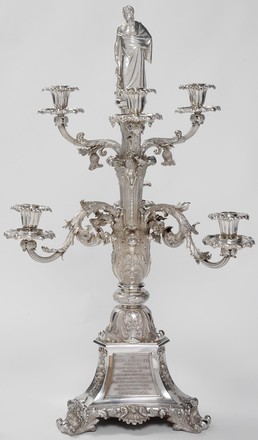
Candelabrum centerpiece cum epergne presented to James Mitchell
Candelabrum centerpiece cum epergne presented to james Mitchell, 1837
John S Hunt
Silver
XR 44
Presented by EJ Merewether, great-great-grandson of James Mitchell, on behalf of the Merewether family, 1979
John S Hunt
Silver
XR 44
Presented by EJ Merewether, great-great-grandson of James Mitchell, on behalf of the Merewether family, 1979
To James Mitchell Esqr. surgeon in H.M. colonial service. Presented by a numerous body of friends desirous of testifying their sense of his medical skill and personal worth. Sydney, New South Wales. 26 September 1837.


 Back to list
Back to list